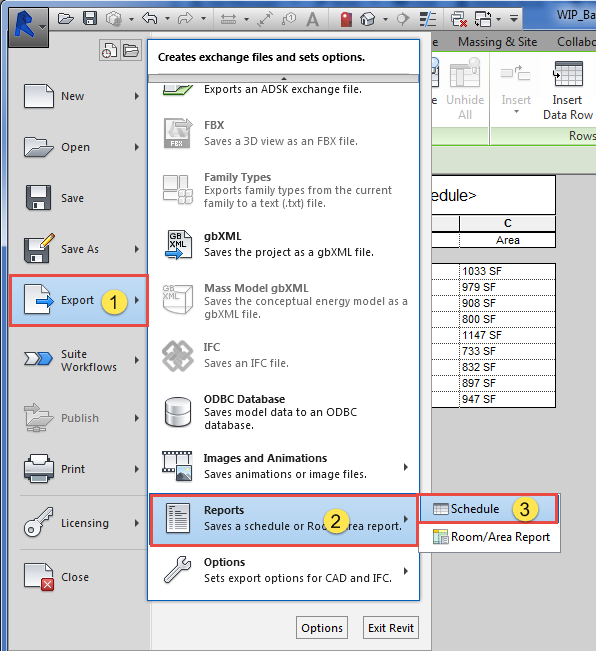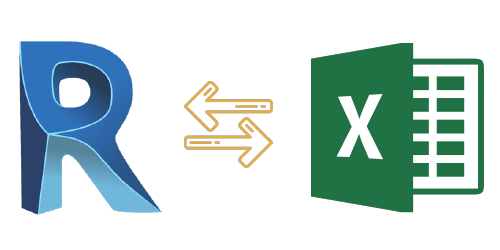Excel Empowerment: Supercharge Your Revit Projects With Seamless Information Import
Are you aiming to supercharge your Revit tasks? With smooth information import, Excel empowerment can be the secret to opening your task's complete potential. Visualize improving the import procedure and taking full advantage of performance with smooth information combination. In this short article, we will share suggestions and techniques for utilizing Master your Revit tasks. Discover how using the Excel-Revit link can lead to success in your tasks. Obtain prepared to take your Revit projects to the next degree with Excel empowerment.
The Power of Excel in Revit Projects
You can supercharge your Revit tasks by taking advantage of the power of Excel for seamless information import. Excel is a versatile device that can substantially improve your operations and efficiency in Revit (revit tools). With Excel, you can conveniently import and handle large quantities of data, conserving you time and effort
Among the key advantages of utilizing Master Revit is its capability to take care of complex estimations and formulas. You can utilize Excel to perform computations on your information, such as producing amounts, calculating expenses, or examining performance. This can be particularly valuable when dealing with big projects that need extensive computations.

In addition, Excel gives a familiar and user-friendly user interface for collaborating with information. You can arrange and manipulate your information in a spreadsheet layout, making it simple to check out and modify. This can be particularly practical when collaborating with others or when you need to make fast changes to your job information.
Furthermore, Excel enables you to quickly import and export data between Revit and other software program applications. You can import information from exterior resources right into Revit, such as material requirements or tools schedules, and export data from Revit to Excel for further analysis or reporting.
Streamlining Data Import With Master Revit
Enhancing information import in Revit becomes much easier when utilizing Excel as a tool. With Excel, you have the power to flawlessly import and take care of huge quantities of information in your Revit jobs. By using the familiar interface and capability of Excel, you can save time and rise performance in your process.
One of the essential advantages of making use of Excel for information import in Revit is the capacity to quickly organize and manipulate data before importing it into your job. With Excel's powerful features, such as sorting, filtering system, and formulas, you can promptly cleanse up and style your data to fulfill the needs of your Revit job.
Additionally, Excel allows you to import data from various sources, such as data sources, spreadsheets, or perhaps web-based applications. This adaptability provides you the freedom to collect data from various systems and consolidate it right into one central place for easy accessibility and monitoring.
On top of that, Excel provides the alternative to produce personalized design templates for data import in Revit. By creating layouts tailored to your task's specific needs, you can guarantee uniformity and accuracy in your information import process.
General, utilizing Excel as a device for data import in Revit simplifies the process and boosts your efficiency. So why not take benefit of this effective tool and supercharge your Revit tasks with seamless information import making use of Excel?
Optimizing Performance With Seamless Information Combination
Optimize effectiveness by seamlessly incorporating and handling data in your workflow. Gone are the days of by hand inputting information into your system, throwing away valuable time and resources. With seamless data integration, you can streamline your procedures and supercharge your productivity.

Taking care of data becomes a wind when you have a seamless assimilation system in location. You can conveniently arrange and classify your information, making it easier to retrieve and assess. Bid farewell to the days of browsing via unlimited spread sheets for that a person piece of information you require.

Excel Advice for Revit Projects
Furthermore, you can make use of Excel to produce this link personalized layouts for information import and export. This way, you can ensure uniformity and accuracy when moving information between Revit and Excel. On the whole, understanding these Excel tricks and tips will greatly boost your capability to manage and adjust data in your Revit projects.
Using the Excel-Revit Connection for Success
To maximize your Excel-Revit link, benefit from the capacity to effortlessly integrate and move job information. By using this powerful link, you can supercharge your Revit projects and simplify your workflow. With just a few basic steps, you can import information from Excel straight into Revit, conserving you time and making certain accuracy.
Among the key advantages of the Excel-Revit connection is the capacity to transfer data seamlessly. Whether you are importing schedules, area information, and even geometry information, Excel gives a straightforward user interface that enables you to arrange and manipulate your information before importing it into Revit. This means you can easily update and change your project details in Excel, and with a couple of clicks, transfer those changes directly right into your Revit design.
Along with moving data, the Excel-Revit link likewise enables for synchronization. This implies that any kind of modifications made in Excel can be automatically upgraded in Revit, making certain that your task details is constantly as much as day. This synchronization feature is specifically helpful when handling big and complicated tasks, as it removes the demand for hand-operated information access and try here minimizes the risk of errors.
Verdict
So there you have it - the power of Master Revit tasks can not be undervalued. By enhancing information import and optimizing performance with seamless information combination, you can supercharge your tasks and attain success. With the Excel-Revit link, you have the devices to take your jobs to the following level and attain remarkable results. So do not wait any kind of longer, begin using the power of Master your Revit tasks today and unlock a globe of opportunities.
You can supercharge your Revit tasks by using the power of Excel for smooth data import. With Excel, you have the power to effortlessly import and take care of big quantities of information in your Revit tasks (revit tools). On the whole, understanding these Excel methods and pointers will greatly boost your capacity to manage and control information in your Revit tasks
Whether you are importing routines, space data, or also geometry info, Excel gives a straightforward user interface that allows you to arrange and manipulate your information before importing it right into Revit. By improving information import and making best use of efficiency with seamless data assimilation, you can supercharge your jobs and attain success.